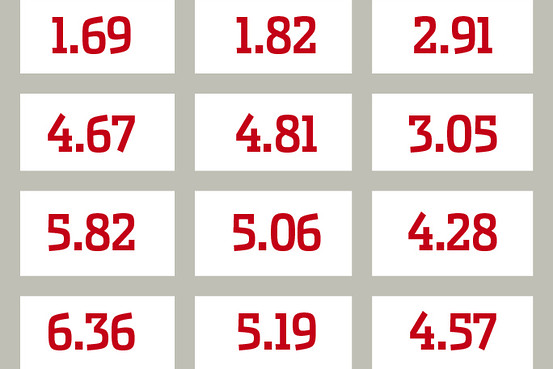Indirect arithmetic for more engaging practice
Sunday May 27, 2012
This article is interesting in and of itself, on the psychology and reality of cheating, but I also very much like the task they had people do in some of the experiments.
In this grid, find the two numbers that add to ten.
Problems like this are very different from typical arithmetic exercises like "what is 5.82 + 6.36?" For one thing, it is a bit more of a puzzle rather than a question, which makes it seem more fun to me. For another, it rewards highly skills like estimation and working logically to break down the problem. In this example, you might first see that the 1.69 and 1.82 can't possibly be involved, since there is no other number greater than 8. Then one might start looking for reasonable pairs with final digits that add to ten, and so on. Compared to a more traditional approach of the form "estimate 5.82 + 6.36" which seems pointless because it lacks a context that makes the estimating appropriate, problems of this grid type provide a real context, even if only in the context of the game.
I have seen similar examples, such as the card games I played with middle school students in an after school math program, in which students are never asked to do arithmetic for its own sake, but are asked to play games that require doing arithmetic for success. It makes for much more engaging practice.
This post was originally hosted elsewhere.
